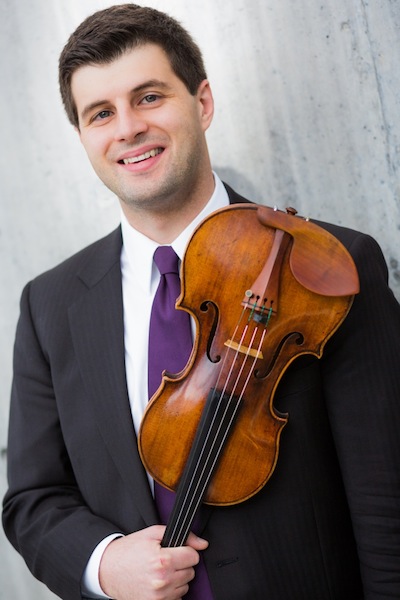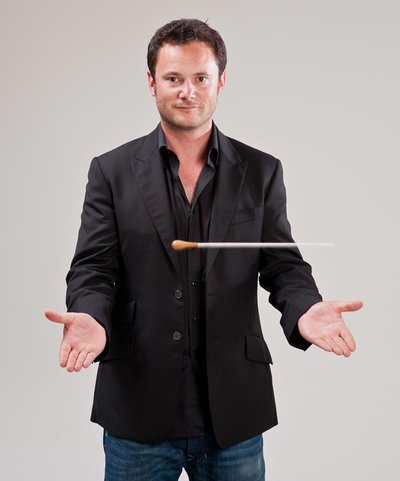Halls leads DSO in fresh and vibrant “nature” program of Vivaldi and Beethoven

Co-concertmaster Nathan Olson was the soloist in Vivaldi’s “The Four Seasons” with the Dallas Symphony Orchestra Thursday night.
While this week’s concerts of the Dallas Symphony Orchestra and guest conductor Matthew Halls won’t win any awards for adventurous programming, Thursday night’s concert brought outstanding performances of a pair of familiar items from the classical hit parade.
The orchestra’s co-concertmaster Nathan Olson stepped into the spotlight as soloist for the opening item, Vivaldi’s The Four Seasons. Vivaldi’s successful marriage of sturdy formal structure with vivid pictorialism has been, for more than half century or so, a bonanza for the classical recording industry, a staple of music appreciation classes, and an attractive, not-overly-demanding showpiece for violinists.
Halls led a reduced orchestra of twenty-five strings from the harpsichord, created a reading suitable for the modern concert hall but one thoroughly and appropriately informed by historical performance practice. Assertively articulated downbows and accents joined a subtly flexible, dance-like rhythmic approach to create a relentless energy.
Soloist Olson responded with a solid, low-vibrato tone that he successfully carried into both the lyrical sections as well as the rapid-fire passage-work. For his part, Halls surely highlighted Vivaldi’s audacious sound effects: the gnats and lightning flashes in “Summer,” for instance, or the violent pizzicatos in the final movement of “Autumn,” or the cold raindrops in “Winter.”
If Vivaldi occasionally lapses into easy sequences, he also frequently creates moments of irresistible interest, here beautifully realized by Olson, Halls, and the orchestra. The descending sequence in the opening movement of “Autumn” provided one such moment of tension and drama; and Halls and Olson collaborated to bring an almost lush romanticism to the cascading colors of the final movement, building a convincing sense of finality and valediction to the cycle.
The harpsichord was removed and replaced by a standard conductor’s podium, and the full Dallas Symphony assembled after intermission for Beethoven’s Sixth Symphony.

Matthew Halls
Here, once again, Halls was able to apply sound early-19th-century performance practice to a modern orchestra in a modern concert hall. he led a surprisingly fresh reading of the familiar work, which, like the Vivaldi, depicts an idealized, city-slicker view of country life, including happy dancing country folk and thunderstorms.
Halls applied intense shaping and expressiveness here, but managed to avoid over-romanticizing this Romantic work. While the tone quality of the modern orchestra is heavier than that of the orchestra of Beethoven’s day, Halls managed to coax a clarity of voicing that evoked the translucent quality this music requires for full effect, without sacrificing the full-bodied depth of the orchestra. The orchestra’s dynamic range, as it traveled through Beethoven’s pleasant meadows and thunderstorms, was as broad as the modern orchestra can create, yet still maintained, under Halls’ guidance, a sense of classical precision.
The concert will be repeated 7:30 p.m. Friday and Saturday and 2:30 p.m. Sunday at Meyerson Symphony Center. mydso.org; 214.849.4376.


